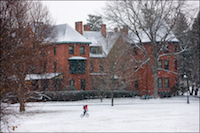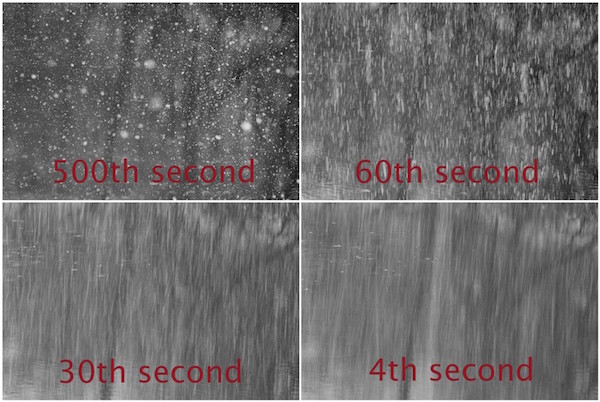How to capture falling snow in your photographs
posted Monday, February 23, 2015 at 1:47 PM EDT

Picture one of those beautiful, Currier and Ives big giant snowflakes snow falls. If you’re in the woods by yourself; it’s just about one of the most peaceful things you can experience.
There’s no wind; you can actually hear the soft luscious flakes landing on the ground. This is photo heaven. You’ve got your camera and you can’t believe it’s all come together like this. Nature, camera, you’re dressed right—it’s too good to be true. But somehow the pictures don’t do the magic of the moment justice and you can’t quite put your finger on the problem.
The snowflakes in the pictures are, well, not quite there. Why? You used the wrong shutter speed.
It was too long. The snow blurred itself into foggy streaks. Falling snow is moving faster than you think and you need to use the appropriate shutter speed if you want to capture those beautiful flakes as sharp white specks.

Big puffy snowflakes fall slower than their little icy cousins, but generally speaking you need a shutter speed of 250th to 500th of a second if you want to freeze—no pun intended—those flakes in mid-air. As the shutter speed gets longer things start to turn to mush. The out-of-focus blobs in the 500th of a second example are flakes that are inches away from the camera. There’s nothing you can do about those.

Another article on snow you might enjoy: